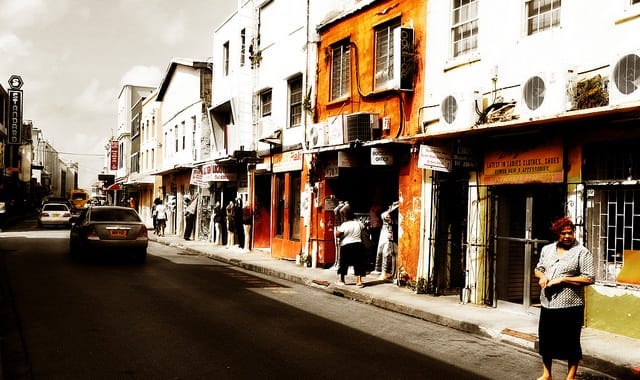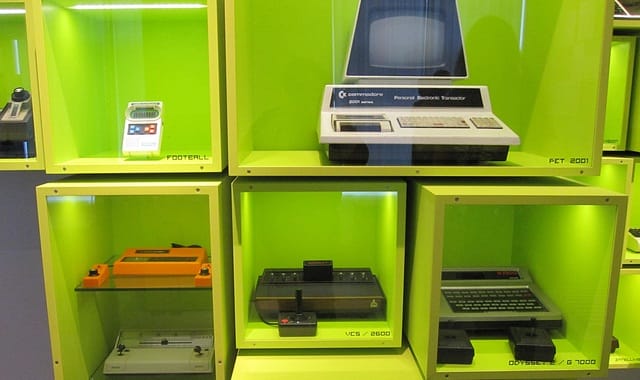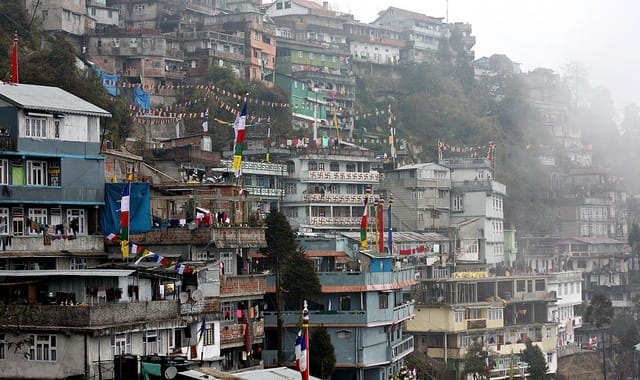Five Places to Play Before You Die

This post is part of a content series presented in partnership with smartwater. smartwater, simplicity is delicious.
Have you ever wondered how people play on the other side of the world from you? Are the attachments that drew you to games that same ones that might draw another person to theirs? Is play actually universal?
Three years ago, a group of game designers decided to try and find out how they could bring the world a bit closer, and the Global Game Jam was born. With over 1600 participants in 23 countries, and a theme of “As long as we have each other, we will never run out of problems,” the GGJ produced 370 games in its first year. The success of GGJ is proof that games are truly an international art form and can be found on every part of the globe. In celebration of the global spirit of gaming, we’ve highlighted some of our favorite tour-stops for the traveler at play:
– – –
Bridgetown, Barbados

(Img via)
If you find yourself in the hometown of Rihanna and desperately need to pick up some videogames, there’s small arcade tucked away in a back alley in the country’s capital of Bridgetown. I found it accidentally while walking back from the library. On the door was a Nintendo 64 logo and so I ducked inside. What I found was a little slice of the Chinatown Arcade in the middle of the Carribbean.
Like many developing countries, taxes prevent the easy sale of videogame consoles and they can drive the price two or three times higher than what one might pay at a Best Buy. Naturally, a black market economy has popped up with hacked PlayStation 2 games. But for those that can’t afford that either there are more old-school options.
On Fairchild Street between Bay and Probyn, this arcade attracts children from all over the 100,000-person island who pay $1 to play Street Fighter IV for an hour. It’s a hodge-podge of kids from “Scottish” highlands in the North to the resort towns on the West. (Granted, Barbados only takes a few hours to circumnavigate.) Nonetheless, the sight of dozens of children cramped around CRT monitors and old televisions and hooting in delight is one the sweetest sights and sounds I’ve heard.
Berlin, Germany: Computerspiele Museum

(Img via)
Germany has long been home to a thriving PC game scene and is home to one of the largest videogame conventions in the world, Gamescom in Cologne. Last year, the Computerspeile Museum opened its doors in the hip Friedrichschain neighborhood of Berlin and I had a chance to check it out, just months after its opening.
Originally a travelling exhibition, the museum covers more than 60 years of videogames as well some unusual additions such as a giant Atari joystick and the legendary PainStation. There are dozens of old consoles and even more memories, including an amazing collection of East German gaming mags.
But part of what makes the museum work is its longview. Videogames are part of a long continuum of play and there’s a lot of trivia packed in those walls. Did you know Bell Labs collaborated with Robert Rauschenberg on an interactive tennis project at an armory in the 60s with Frank Stella as a tennis player? Or that people played chess via postcard one move at a time? Cool stuff indeed.
Darjeeling, India

(Img via)
Journalist Lee Bradley stumbled across the “highest arcade in the world” when his passage to Tibet was blocked by protest. Looking for something else to fill his time while still in Darjeeling, India he discovered an arcade at the edge of the world:
“When I say “arcade,” what I really mean is a collection of old televisions wired up to PlayStations, arranged across a battered formica tabletop. Covering the entire back wall was a massive cabinet stuffed to bursting with pirated PSOne games, complete with poorly photocopied boxart. For just a few rupees the young boy that ran the arcade would grab the game of your choice, pop it into a PlayStation and keep you topped up with cups of Darjeeling’s finest. After days of travelling, catching snippets of sleep on noisy, dusty trains, this was exactly what we needed.
We spent all day sat in there, making our way though every two player game we could find. We devoured racing games both familiar and unfamiliar (Kill Kartoon Karts anyone?) and a fair few sports titles before we eventually settled down for a marathon session of Street Fighter Alpha 3.”
What ensued was a match with a young boy who barely spoke English “but spoke Street Fighter” and more proof that games can be a universal language.
East Lansing/Ann Arbor, MI: Pistol Pete’s
There are plenty of “vintage” arcades across the U.S. — New Hampshire’s Funspot and New York City’s Barcade, and that’s well and good if you’re an extra in Tommy. But while the focus that classic arcades have on the earliest era of arcade games is wonderful, if you a 90s-occupying videogame kid like me, there’s a certain class of games that is neglected. Fortunately, Pinball Pete’s in Ann Arbor (and East Lansing) is a real treat.
Stocked with my classics like Point Blank, Mortal Kombat, and Die Hard: The Arcade, it’s a testament to the next era of arcade games and a fitting bookend. What Pac-Man started, NBA Jam ended as the popularity of the console and PC games in the early 90s shuttered arcades. It’s a bittersweet piece of gaming history, but to see it relived in places like Pete’s is a nice reminder of the days when I could cash-in my report card for tokens.
Tokyo, Japan: Takino Hillside National Park Playground

Costing more than 1.5 billion yen to construct, this massive park outside of Tokyo is the future of playgrounds that I never saw as a child. Illuminated by lights and mesh, this is plucked from the colorful world of Takashi Murakami and is exactly the sort of place busy adults like me could use as an afterwork spot.
In reality, the rainbow nest dome was made in with collaboration with fabric artist Toshiko Macadam. The organic forms were insired by ant hives and built from computer models. Mocadam explained how she went from knitting to child’s play:
“It all happened quite by accident. Two children entered the gallery and, blissfully unaware of the usual polite protocols that govern the display of fine art, climbed into the structure. The work suddenly came alive in ways she had never really anticipated. The fabric took on new life, swinging and stretching with the weight of the small bodies, forming pouches and other unexpected transformations, and above all there were the sounds of the undisguised delight of children exploring a new play space.”



